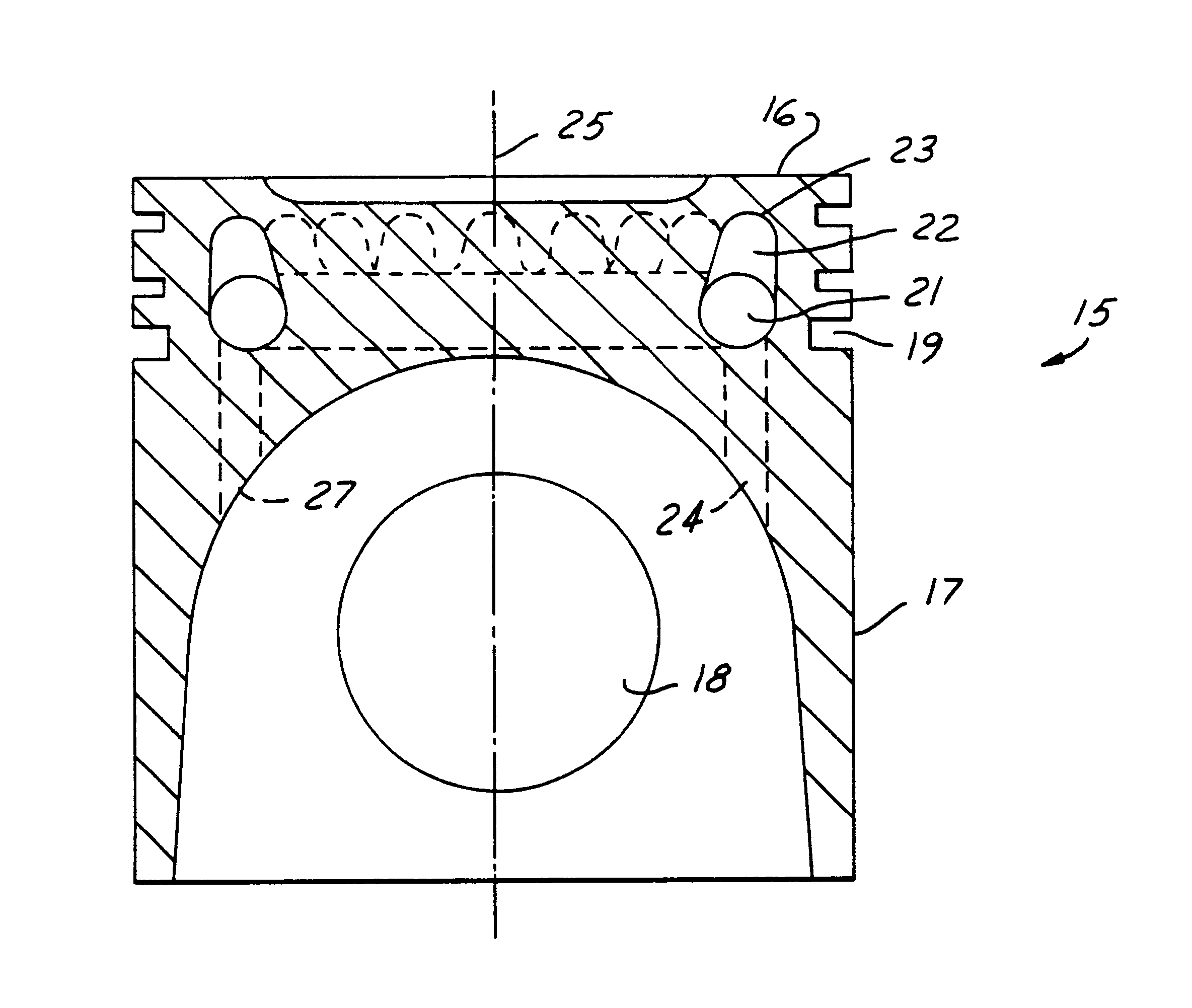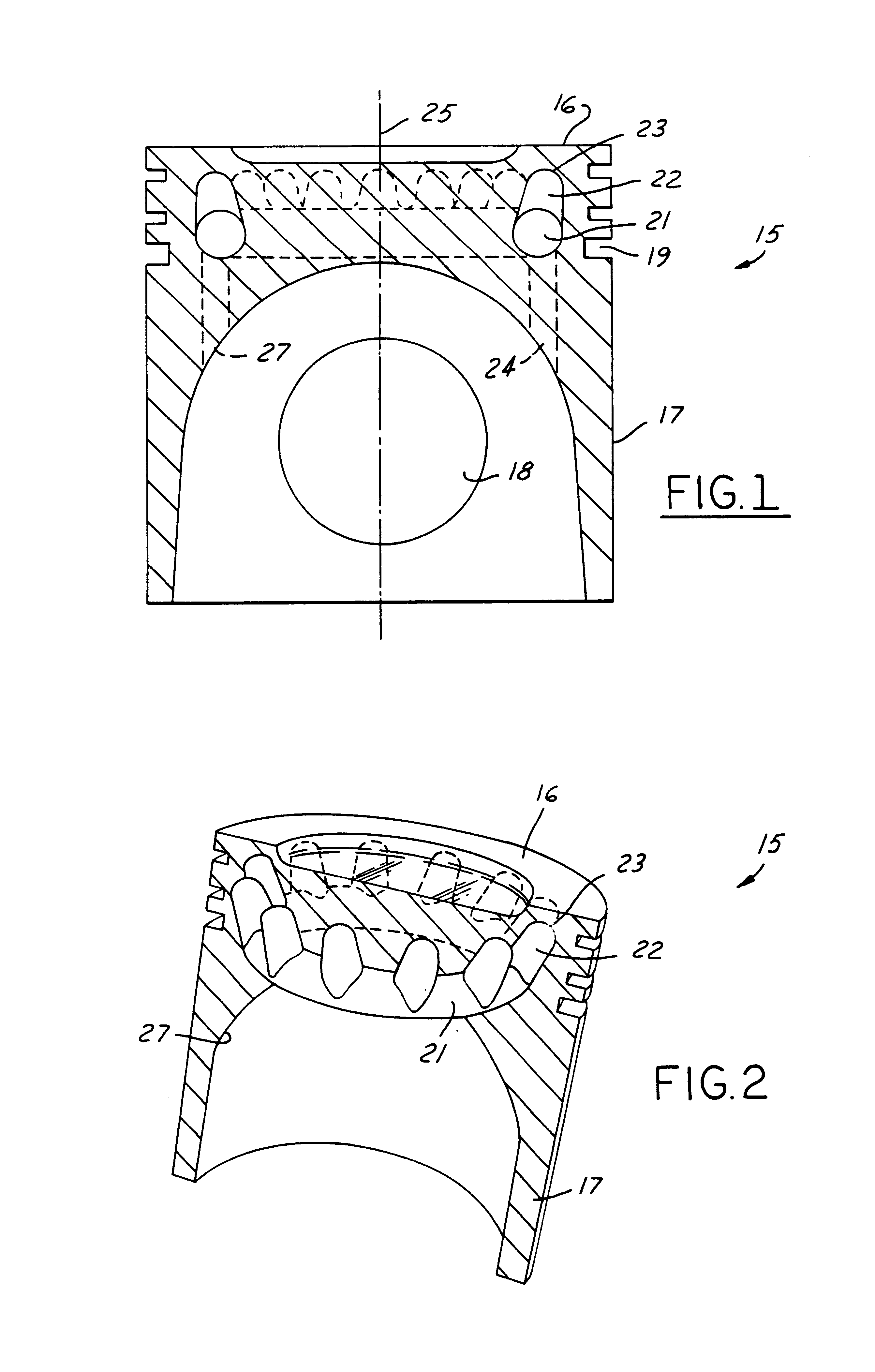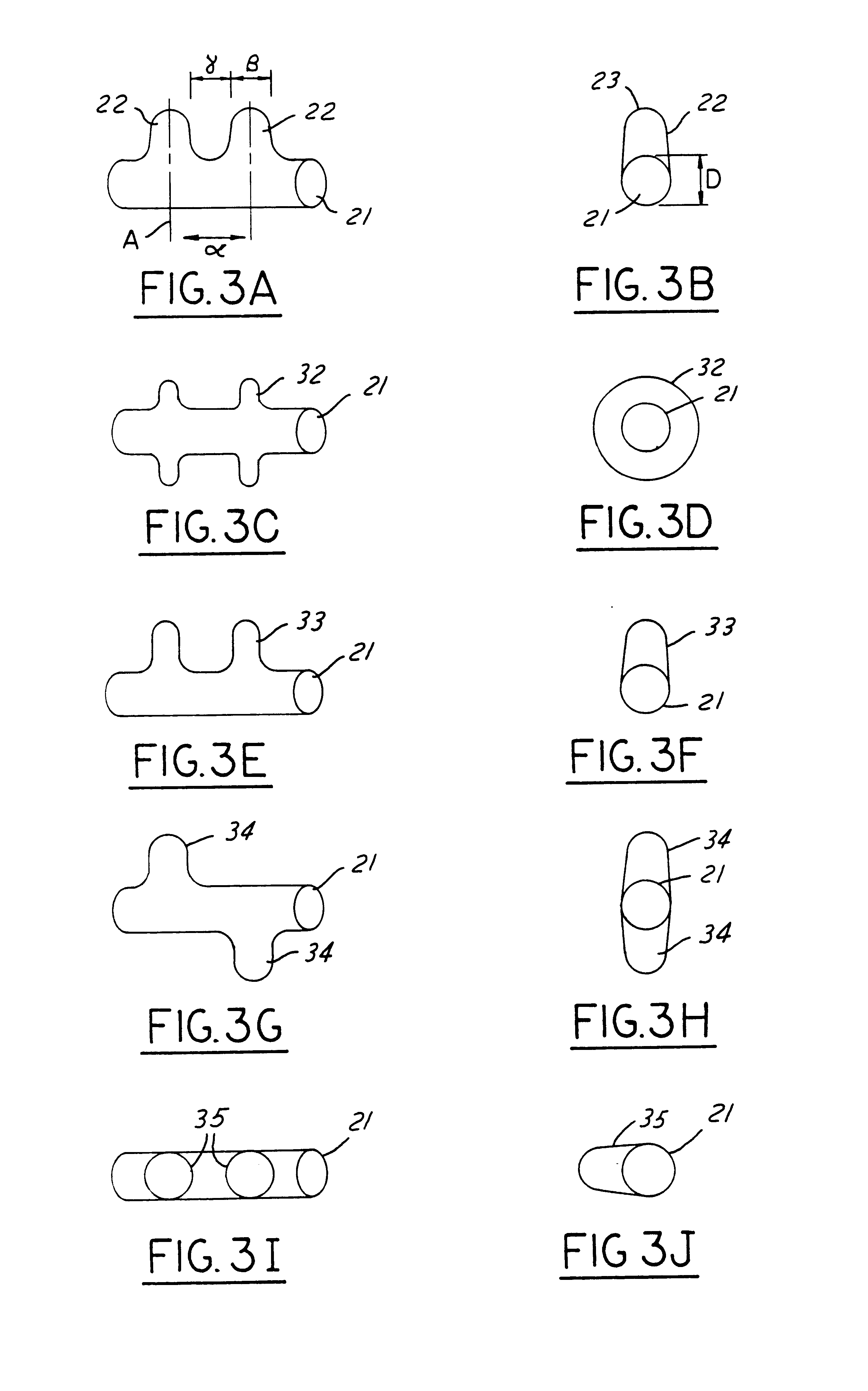Piston coolant gallery
a coolant gallery and piston technology, applied in the direction of engine components, mechanical equipment, foundry moulding equipment, etc., can solve the fundamental limit of the compression ratio of a spark-ignition, gasoline engine, and the material used in the construction of such engines is under severe stress, so as to reduce the thickness of the section, the effect of introducing distortions of the stress field and facilitating stress analysis
- Summary
- Abstract
- Description
- Claims
- Application Information
AI Technical Summary
Benefits of technology
Problems solved by technology
Method used
Image
Examples
Embodiment Construction
)
[0055]The terms “upper” and “lower” as used herein relate only to relative positions of components shown in the diagram. In a working engine, or pump, the components may be arranged in any appropriate orientation consistent with provision for lubrication, cooling, fuel feed and combustion intake and exhaust flows.
[0056]Referring to the drawing(s), and in particular FIG. 1, a (cast) piston 15, is of generally cylindrical form, with a hollow underside 27, to house the small end of a connecting rod (not shown), through a transverse pin 18. In a conventional piston, with a gudgeon or wrist pin, bearing is taken at the piston walls.
[0057]Alternatively, a spherically-jointed piston configuration (not shown), with a part-spherical bearing surface on the piston underside, interfacing with a complementary, part-spherical bearing surface upon a connecting rod small end, and located by a retaining ring, also with a part-spherical bearing surface, and fitted to the piston internal wall, is com...
PUM
 Login to View More
Login to View More Abstract
Description
Claims
Application Information
 Login to View More
Login to View More - R&D
- Intellectual Property
- Life Sciences
- Materials
- Tech Scout
- Unparalleled Data Quality
- Higher Quality Content
- 60% Fewer Hallucinations
Browse by: Latest US Patents, China's latest patents, Technical Efficacy Thesaurus, Application Domain, Technology Topic, Popular Technical Reports.
© 2025 PatSnap. All rights reserved.Legal|Privacy policy|Modern Slavery Act Transparency Statement|Sitemap|About US| Contact US: help@patsnap.com



